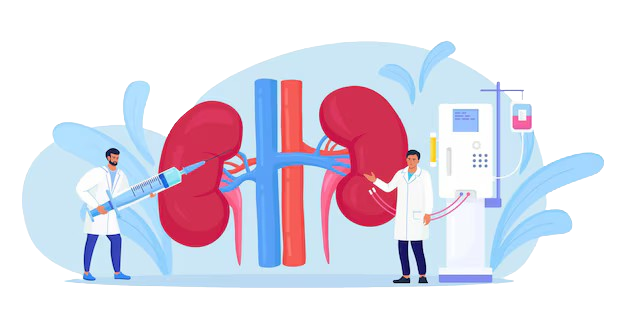Hemodialysis & Peritoneal Dialysis
Hemodialysis and Peritoneal Dialysis are two common treatments for kidney failure. Hemodialysis involves using a machine to filter waste, toxins, and excess fluids from the blood through an external dialyzer. It requires regular sessions at a dialysis center or home setup. Peritoneal Dialysis uses the lining of the abdomen (peritoneum) as a natural filter, with a special fluid introduced into the abdominal cavity to remove waste. This method can be done at home and provides more flexibility. Both treatments aim to maintain kidney function and improve the quality of life for patients with advanced kidney disease. In hemodialysis, the patient's blood is filtered outside the body using a dialysis machine. The blood is removed, cleaned through a dialyzer (artificial kidney), and then returned to the body. It is typically performed in a hospital or dialysis center, but some patients may do it at home. In peritoneal dialysis, the inside lining of the patient’s abdomen (peritoneum) is used as a natural filter.

Causes of Hemodialysis & Peritoneal Dialysis
- Chronic Kidney Disease (CKD).
- Diabetes.
- High Blood Pressure.
- Glomerulonephritis (kidney inflammation).
- Polycystic Kidney Disease.
- End-Stage Renal Disease (ESRD)
- Acute Kidney Injury (AKI)
- Diabetic Kidney Disease


Symptoms of Hemodialysis & Peritoneal Dialysis
- Fatigue and Weakness.
- Swelling in Legs, Ankles, or Feet.
- Shortness of Breath.
- Nausea and Vomiting.
- Decreased Urine Output.
- Confusion or Mental Fog.
- Confusion or Difficulty Concentrating – Due to toxin accumulation affecting brain function.
